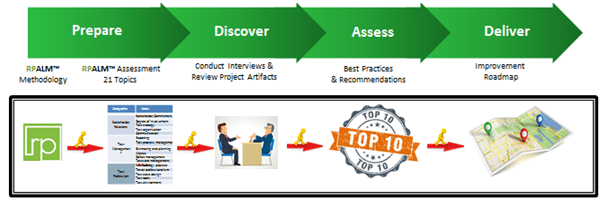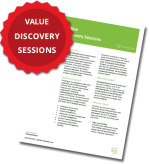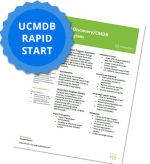The Unlikely Decline of Offshore Testing
By: Matt Angerer
Companies have often used offshoring as their main strategy in minimizing software testing costs. Recently however, the previous advantages offered by offshore testing have begun to erode. Volatile fuel costs, increasing wages in overseas locations, a global economic crisis, and security concerns all continue to decrease offshore testing’s viability. Other challenges, like real-time collaboration across time zones, add to the mounting number of reasons.
Agile teams, for example, prefer to work in real-time collaboration. An offshore testing team in Chennai, India supporting your development team in Boca Raton, FL doesn’t make much sense when there is only 2-3 hours of overlap when real-time communication can occur. Concerns over quality of work and experience levels of the offshore testers have also contributed to the decline of pure play offshore testing.
In response to such concerns, an increasing number of companies have begun to explore a solution known as “rightshoring.” Today, more and more organizations have testers located closer to the actual design efforts of their software. According to a book entitled “Rightshore! Successfully Industrialize SAP Projects Offshore,” there are five implementation delivery models. Those models include:
- External Offshore – a practice featuring the external execution by offshore partners
- External Distributed Delivery – featuring external execution by nearshore partners with work subcontracted to offshore partners
- External Nearshore – includes external execution performed by nearshore partners
- Internal Centralized – features a single party performing internal execution
- Internal Decentralized – several parties performing internal execution
Written by Capgemini consultants, Anja Handel, Wolfgang Messner and Frank Thun, the book provides guidance for determining which rightshoring option is right for your business needs.
Why Rightshoring Matters
The topic is certainly one of value today. According to the World Quality Report, research indicates that the current distribution of testers is now 59 percent onshore, 20 percent nearshore, and only 21 percent located offshore. In response to more fast-paced transformation projects, and a need for more in-depth understanding of business processes and objectives, the current trend favors a move toward onshore and nearshore testing.
Last year, Global Pure Play Software Testing Services Market 2014-2018 had predicted that the global pure play market would expand at a rate of almost 17 percent by 2018, largely due to the prevalence of cloud-based testing solutions. Yet, a more recent World Quality Report indicates this is not the prevailing trend. In fact, the percentage of testers located offshore actually decreased by seven percent between 2013 and 2014.
What Is Driving the Decline in Offshore Testing
The primary factor driving the transition from pure play global testing to a rightshoring solution, is the way new development projects are transforming the dynamics that exist within QA and Testing. Digital transformation projects now account for a much larger share of QA Testing budgets. The World Quality Report claims that 60 percent of respondents indicated nearly 40 percent of their QA and Testing budgets are dedicated to digital transformation. What this means for testers is an increased need to be aligned with software development and production teams.
Due to time differences, stricter privacy laws, and language barriers, offshoring has proven to be challenging for many European organizations. Europe is currently leading the world in shifting testing from offshore locations, particularly India, closer to home in Eastern Europe. These solutions benefit from being able to tap into an expanding economy of talented testers, while still taking advantage of labor cost savings. In France, organizations are leveraging nearshore testing services in North Africa, where a French-speaking population helps to eliminate language barriers. Even the United States is now tapping into this trend by considering an effective blend of time considerations, quality, and cost factors to arrive at the best rightshoring service locations.
Aligning Priorities
As organizations continue to shift QA and Testing resources around the globe, one fact remains: managing the framework of quality assurance administration remains the top priority. Whether it’s nearshore, offshore, rightshore, or no-shore – consistency in documentation requirements, test scripts, executions, and defect logs can make or break a large scale implementation. Comprehensive analysis of People, Process, and Technology will help you locate bottlenecks impeding your progress, whether its designing, building, or testing.
RPALM™ is an accelerated and results-driven assessment methodology designed to provide tactical and strategic recommendations to reach your desired end-state within a proposed timeline. The ResultsPositive proprietary methodology is designed to be prescriptive and lightweight, covering 21 topical areas across 3 main ALM categories. It is prescriptive in that we help you answer the who, what, when, why and how through a series of focused interviews and expert analysis of project artifacts. Our methodology is lightweight because we employ a results-oriented mindset that delivers fast, actionable, comprehensive, and no-frills assessments of your current ALM environment within 3 weeks. The methodology was derived from over 20 years of QA and Testing Experience across 7 sectors, including: CPG, Defense, Public Sector (Federal, State, and Local Governments), Energy/Utilities, Financial Services, Retail, and Manufacturing.
We leverage industry expertise of practicing QA Leaders and Test Managers to cut straight to the fundamental components your organization can employ to gain visibility, reduce costs, increase delivery control, and improve overall solution delivery. Our umbrella mentality is knowing that a sound ALM foundation is the result of a harmonious balance between People, Process, and Technology to help you mitigate risk.
Download our RPALM™ fact sheet and learn how our rapid assessment methodology can be leveraged at any phase of the system delivery lifecycle. We will review your entire governance model, both onshore and offshore, to develop an improvement roadmap. Ask about our 1 hour complimentary assessment of your as-is state.
About ResultsPositive
ResultsPositive, award winning HP Partner of the Year for Sales Growth (2014), Customer Support (2013), PPM (2010, 2011, 2012), and Executive Scorecard (2012), was founded in 2004. ResultsPositive is a leader in IT Software consulting delivering Project & Portfolio Management, Application Transformation, Business Intelligence, Mobility, Application Lifecycle Management, IT Service Management, Business Service Management, Healthcare Transformation, & Cloud and Automation solutions across the entire HP IT Performance Suite for medium sized and Fortune 500 companies. As both an HP Platinum Partner and HP ASMP-S Support Provider, ResultsPositive has the experience, support, and training necessary to turn your complex IT processes into tangible business solutions.
For more information about our testing services, visit:
https://resultspositive.com/application-lifecycle/testing/
Subscribe for the latest RP Blog Updates:











